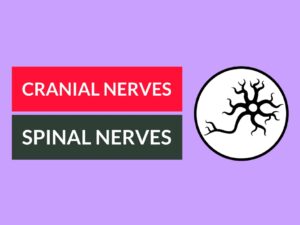Difference Between Chordates and Non-chordates
Introduction: Chordates and non-chordates are two major groups of animals that differ in their body structure and characteristics. In this article, we will explore what chordates and non-chordates are, examples of each group, and discuss their uses. Furthermore, we will also present a comprehensive table highlighting ten key differences between chordates and non-chordates.
What are Chordates?
Chordates are a group of animals that possess a notochord at some stage of their life. The notochord is a flexible rod-like structure that provides support to the body. In addition to the notochord, chordates also have a dorsal nerve cord, pharyngeal slits, and a post-anal tail.
Examples of Chordates:
– Humans and other mammals.
– Birds and reptiles.
– Fish, including sharks and rays.
Uses of Chordates:
– Chordates, especially mammals, play a crucial role in ecological balance.
– They are used for scientific research to understand human anatomy and physiology.
– Chordates, such as birds, are beneficial for seed dispersal and pollination.
What are Non-chordates?
Non-chordates are animals that do not possess a notochord or any of the other characteristic features of chordates. These animals exhibit a wide variety of body plans and can be found in various habitats.
Examples of Non-chordates:
– Insects, such as ants, bees, and butterflies.
– Mollusks, including snails, octopuses, and clams.
– Arthropods, such as spiders, crabs, and centipedes.
Uses of Non-chordates:
– Non-chordates, particularly insects, are important for pollination and as natural pest controllers.
– Many non-chordates, such as snails and clams, have economic importance in the food industry.
– Non-chordates like arthropods are widely used in medical research to understand diseases and develop treatments.
Differences Between Chordates and Non-chordates:
| Difference Area | Chordates | Non-chordates |
|---|---|---|
| Muscular System | Well-developed muscular system | Less complex muscular system |
| Respiratory Organs | Gills, lungs, or both | Trachea or spiracles |
| Excretory System | Kidneys | Malpighian tubules |
| Body Symmetry | Bilateral symmetry | Radial symmetry or no symmetry |
| Nervous System | Dorsal nerve cord | Ventral nerve cord |
| Digestive System | Complete digestive system | Incomplete digestive system |
| Reproduction | Sexual or asexual | Sexual or asexual |
| Body Segmentation | Vertebrates have segmented spinal column | Non-segmented or segmented body |
| Circulatory System | Heart with multiple chambers | Open circulatory system or tubular heart |
| Development | Chordates undergo embryonic development | Non-chordates exhibit various modes of development including direct and indirect |
Conclusion:
In summary, chordates are animals that possess a notochord, while non-chordates do not. Chordates have well-developed muscular systems, various respiratory organs, and kidneys for excretion. They also exhibit bilateral symmetry, have a dorsal nerve cord, and a complete digestive system. Non-chordates, on the other hand, exhibit a wide diversity in body plans, respiratory and excretory systems. They can have radial symmetry, ventral nerve cord, and an incomplete digestive system.
People Also Ask:
1. What are the main characteristics of chordates?
Chordates possess a notochord, dorsal nerve cord, pharyngeal slits, and post-anal tail at some stage of their life.
2. Which animal groups are considered non-chordates?
Insects, mollusks, and arthropods are examples of non-chordates.
3. Are all chordates vertebrates?
No, not all chordates are vertebrates. While vertebrates, such as humans and fish, have a backbone, there are also chordates, like tunicates and lancelets, that do not have a backbone.
4. Can non-chordates have complex behaviors?
Yes, many non-chordates, especially insects, exhibit complex behaviors such as communication, cooperation, and navigation.
5. Do chordates and non-chordates play a role in the environment?
Yes, both chordates and non-chordates play important ecological roles as they contribute to the balance of ecosystems through various interactions, such as pollination, seed dispersal, and controlling populations of other organisms.


